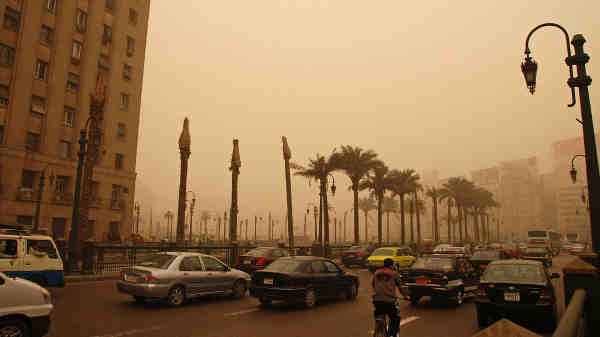Air Pollution Kills 6.5 Million People in a Year: WHO

With nearly 6.5 million people dying annually from air pollution and 92 per cent of the world’s population living in places where levels exceed recommended limits, the United Nations (UN) rolled out Tuesday its most detailed profile of the scourge ever in a bid to slash the deadly toll.
“Fast action to tackle air pollution can’t come soon enough,” top UN World Health Organization (WHO) environmental official Maria Neira said of the new air quality model, which includes interactive maps that highlight areas within countries exceeding WHO limits. The world’s population reached 7.35 billion last year, according to UN figures.
[ Also Read: How India Plans to Control Its Population Growth ]
“Solutions exist with sustainable transport in cities, solid waste management, access to clean household fuels and cook-stoves, as well as renewable energies and industrial emissions reductions,” Dr. Neira added.
Nearly 90 per cent of the deaths occur in low- and middle-income countries, with nearly two out of three occurring in the South-east Asia and Western Pacific regions.
“Air pollution continues to take a toll on the health of the most vulnerable populations – women, children and the older adults,” WHO’s assistant director General Flavia Bustreo said. “For people to be healthy, they must breathe clean air from their first breath to their last,” she added.
[ Request for Help to Open Free School for Poor Children ]
Major sources of air pollution include inefficient modes of transport, household fuel and waste burning, coal-fired power plants, and industrial activities.
But not all air pollution originates from human activity. For example, air quality can also be influenced by dust storms, particularly in regions close to deserts.
“The new WHO model shows countries where the air pollution danger spots are, and provides a baseline for monitoring progress in combatting it,” Dr. Bustreo said.
Developed in collaboration with the University of Bath, United Kingdom, it represents WHO’s most detailed outdoor air pollution-related health data ever, based on satellite measurements, air transport models and ground station monitors for more than 3,000 locations, both rural and urban.
[ How Pollution Makes Delhi a Poisonous Gas Chamber ]
Some three million deaths a year are linked to exposure to outdoor air pollution. Indoor air pollution can be just as deadly. In 2012, an estimated 6.5 million deaths (11.6 per cent of all global deaths) were associated with indoor and outdoor air pollution together.
Ninety-four per cent of the deaths are due to non-communicable diseases – notably cardiovascular diseases, stroke, chronic obstructive pulmonary disease and lung cancer. Air pollution also increases the risks for acute respiratory infections.
WHO’s Ambient Air quality guidelines limit annual mean exposure to particulate matter with a diametre of less than 2.5 micrometres (PM2.5), such as sulfate, nitrates and black carbon, which penetrate deep into the lungs and cardiovascular system, posing the greatest health risks.
The Sustainable Development Goals (SDGs) of the 2030 Agenda, adopted at a UN summit last year, call for substantially reducing the number of deaths and illnesses from air pollution.
In May, WHO issued a new road map for accelerated action with local health sectors increasing monitoring and assuming a greater leadership role in national policies affecting air pollution.





